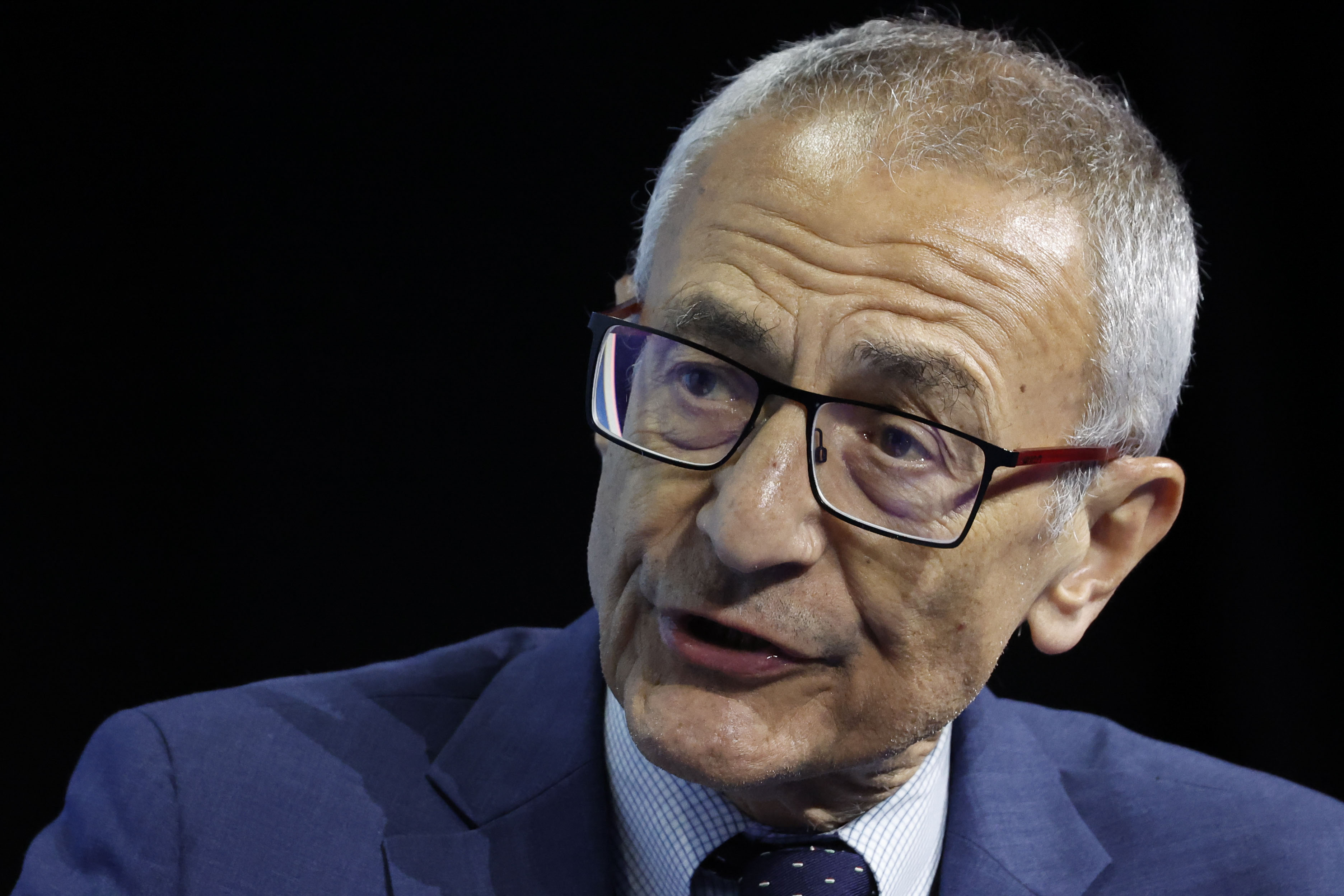Podesta Heads to China for New Round of Climate Talks
(Bloomberg) -- Climate negotiators from the world’s top two greenhouse gas emitters are set to huddle soon in China, with talks aimed at forging progress on cutting global emissions and boosting funding for poor nations.
John Podesta, the US senior adviser to the president for international climate policy, is set to meet with his Chinese counterpart, Liu Zhenmin, during the first week of September, according to people familiar with the matter who asked not to be named because the information isn’t public.
The meetings are expected to build on earlier discussions between the two countries, including in-person talks held in Washington in May. Negotiators are looking to solidify cooperation on the energy transition and contend with a range of greenhouse gas emissions, going beyond just carbon dioxide.

The White House has confirmed an upcoming meeting, but spokespeople declined to comment on specific dates. When asked about the meeting at a daily briefing on Thursday, a spokesperson at China’s Ministry of Foreign Affairs didn’t specifically confirm it, but reiterated that China and the US agreed to continue to implement the consensus reached at a meeting between the leaders of the two countries in San Francisco.
The talks come at a critical juncture — less than three months before the COP29 climate summit in Azerbaijan and a US election set to dictate not only the nation’s next president but also its approach to planet-warming pollution.
The two countries also are developing new pledges for emission cuts by 2035, potential terrain for the discussions in Beijing. The next round of those nationally determined commitments, or NDCs, as they’re known under the Paris Agreement, are due next year, and the submission from China is set to be the first to outline the country’s decarbonization plans following an expected emissions peak this decade.
As the world’s biggest greenhouse gas emitter, China is under pressure to set more ambitious targets for 2035, with a number of models showing the country needs to cut planet-warming pollution at least 30% from current levels to be aligned with goals of limiting warming to 1.5C above pre-industrial levels, said Lauri Myllyvirta, a senior fellow at the Asia Society Policy Institute’s China Climate Hub.
Just maintaining the country’s current staggering deployment of wind and solar power would go a long way, Myllyvirta said, and China can build on its plummeting approvals of new coal power plants this year and its decision to halt permitting new coal-based steel factories.
Both countries also are expected to address one of the thorniest issues facing this year’s United Nations climate summit: a new, post-2025 goal for funding to accelerate the green transition in developing nations and protect them from more extreme weather. Some nations are pushing China to contribute despite its status as a developing nation.

The coming US presidential election is the backdrop for the talks. Under President Joe Biden, the US has sought to find consensus with China on climate change while navigating more treacherous terrain, including tensions over trade policy and human rights. Democratic nominee Kamala Harris is largely expected to follow that course if she wins.
By contrast, Donald Trump, the country’s Republican presidential nominee, has threatened to ratchet up tariffs on goods from China and abandon the Paris Agreement, the treaty that provides the foundation for global climate diplomacy.
Negotiators will continue work to establish deeper US-China collaboration on priorities they outlined last year, including encouraging a circular economy as well as addressing greenhouse gases beyond carbon dioxide and contending with the energy transition. Both countries have sought to foster connections between non-state, non-governmental organizations that can sustain US-China collaboration on climate even if Trump is elected and official interactions chilled.
US-China agreements on climate have found their way into international accords, underscoring the importance of the bilateral relationship, said Joanna Lewis, an expert in international policy at Georgetown University.
“It will be important for John Podesta to do as much as possible given the short amount of time that’s really left in this administration to put it into a solid position going into the future,” Lewis said at a Center for American Progress event Tuesday..
Podesta’s visit is part of a larger string of US-China diplomacy, including US National Security Adviser Jake Sullivan’s meetings in Beijing this week. Sullivan and Chinese Foreign Minister Wang Yi “underscored the importance of concrete steps to tackle the climate crisis and welcomed further discussions” during Podesta’s “upcoming travel to China,“ according to a White House readout of the diplomats’ meeting.
(Updates with response from China’s Ministry of Foreign Affairs in the fourth paragraph)
©2024 Bloomberg L.P.





